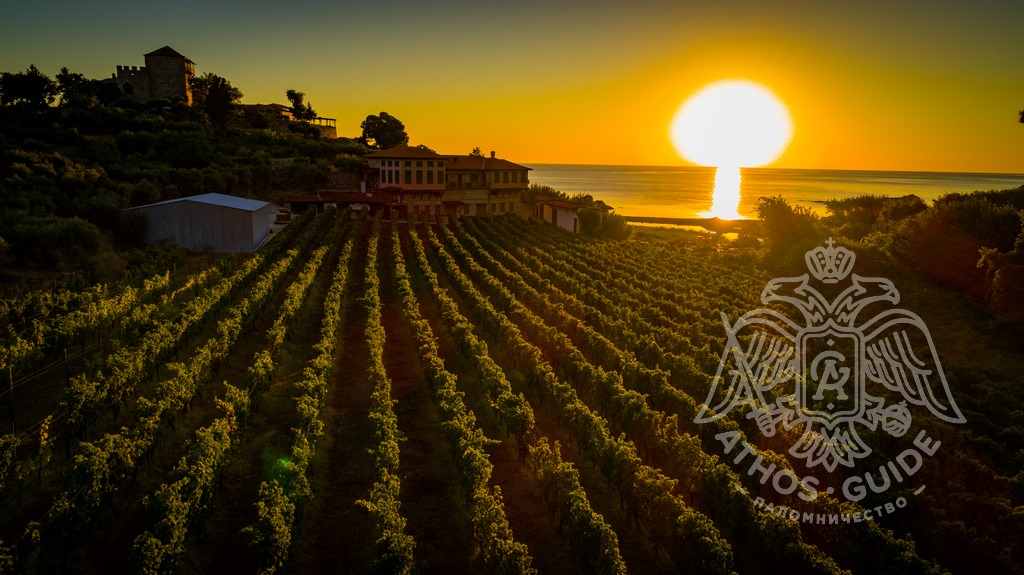History and present days

A large-scale reconstruction took place after a pirate raid (1527-28), thanks to the care of the metropolitan bishop of Tirnovo Theophilos, who had previously lived there as an ascetic.
There are many references to Mylopotamos in documents of the 16th and 17th century. The frescoes of the church (the Annunciation, Saint Efstathios, Saint Michael of Synadon) date also back to that period. Important renovations were carried out at the end of the 19th century, when the Ecumenical Patriarch Joachim III was staying there (1889-1901).
During the 20th century, the seat remained deserted and abandoned for many decades. In recent years, it has flourished thanks to the efforts of the monks, who have reused the famous vineyards of Mylopotamos and now produce the exceptional wine that carries the same name.
Close to the vineyards, there is a carriage road that crosses a rushing torrent with huge plane trees, a wooden bridge and a fountain that unfortunately dried up. The vegetation is dense. To the left one has a panoramic view of Mylopotamos - the vineyard and the winery facilities can all be seen. In close distance, we come across the renovated stone-built workhouse of the Philotheou Monastery. The road branches off. The car road on the left continues along the coast towards Morfonou and Great Lavra, while the road on the right leads to the monasteries of Karakalou and Philotheou.


